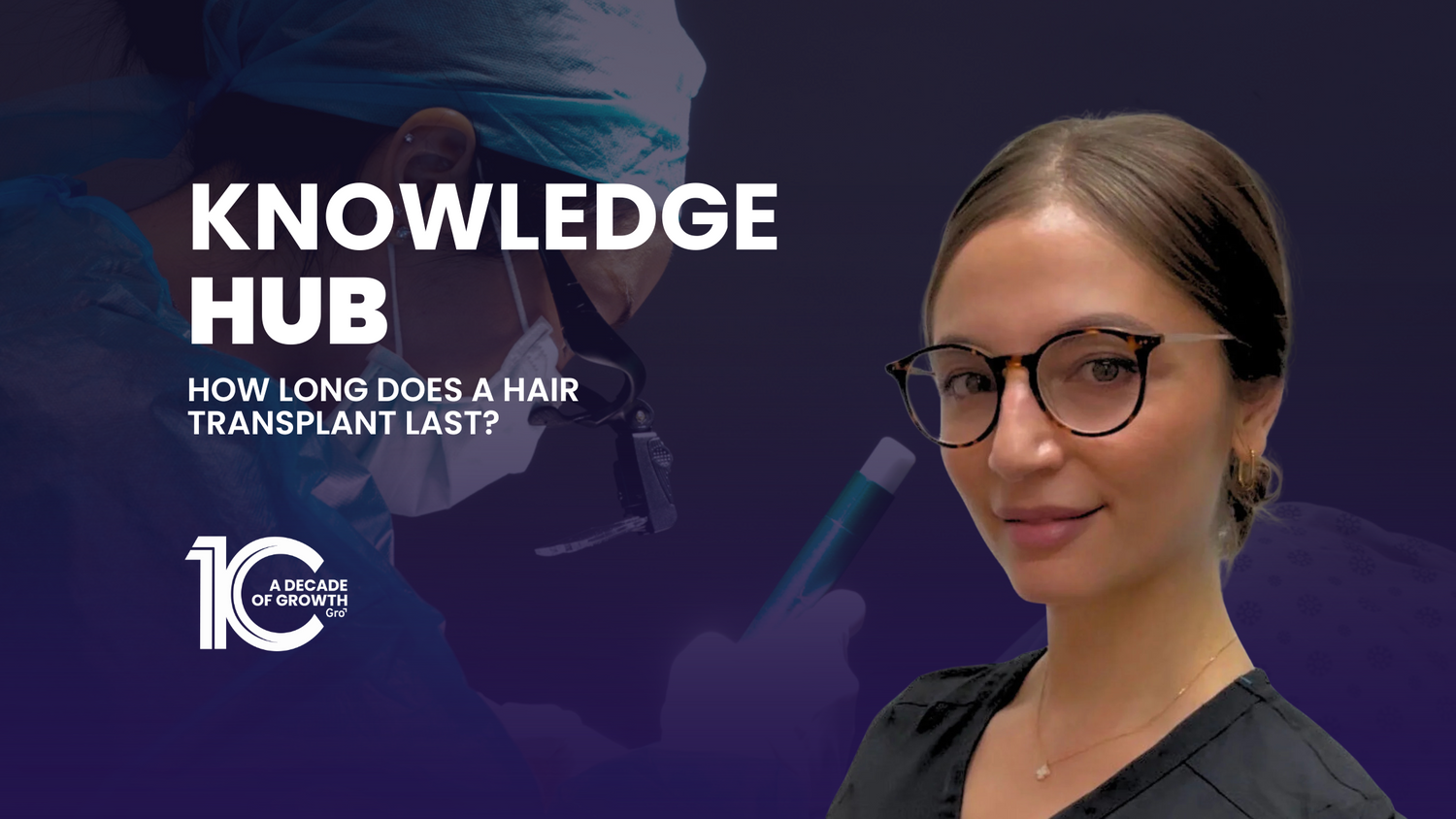One of the most common questions we receive at Gro Clinics is whether a hair transplant is a permanent solution to hair loss. With so many over-the-counter products and prescription treatments available in Australia, it’s important to understand how surgical hair restoration compares - especially in terms of longevity, care, and ongoing maintenance.
In this guide, we break down how long hair transplants last, what affects your results, and how to maintain your new hair over time. All information is provided for educational purposes and reflects the clinical experience of the Gro medical team.
What Is a Hair Transplant and How Does It Work?
A hair transplant is a medical procedure where healthy follicles are moved from one part of your scalp to areas experiencing thinning or balding. This is typically done using one of the following methods:
- Follicular Unit Extraction (FUE): Individual grafts are extracted and implanted one by one. This method is popular due to minimal scarring and a faster recovery.
- Follicular Unit Transplantation (FUT): A strip of scalp containing follicles is harvested and dissected into grafts. This technique may be suitable in certain high-volume cases.
- Precise Follicle Placement (PFP): At Gro Clinics, we use a follicular unit extraction (FUE) method with direct implantation, referred to as PFP. This approach involves using an implanter tool to place individual grafts without the need for prior channel incisions.
These methods relocate follicles that are typically resistant to hair loss, especially from the sides or back of the scalp.
Do Hair Transplants Last Forever?
In most cases, yes, a hair transplant is designed to be permanent. Transplanted follicles retain their original characteristics, which means they are not affected by DHT (dihydrotestosterone), the hormone commonly responsible for male and female pattern hair loss.
That said, longevity depends on several factors:
- The stability of your hair loss at the time of surgery
- Your genetics and age
- Post-operative care and medical management
- Your overall scalp health and underlying conditions
Results do not appear immediately. It often takes 12–18 months to see the full result, following a cycle of initial shedding, regrowth, and thickening.
Hair Growth Cycle After Transplantation
After the procedure, your new follicles follow the normal hair growth cycle:
- Anagen (growth phase): New hairs start growing within weeks to months.
- Catagen (transition phase): Follicles slow down and prepare for rest.
- Telogen (resting phase): Old hairs remain while new ones grow underneath.
- Exogen (shedding phase): Mature hairs fall out naturally, replaced by new ones.
This cycle continues for years, just like natural hair. The goal is to build stable, sustainable density that matches your desired outcome.
Can You Need a Second Procedure?
Most people only require one hair transplant. However, you may choose a second procedure to:
- Add more density in specific areas
- Adjust the shape or design of your hairline
- Address ongoing hair loss in untreated areas
In rare cases, a follow-up procedure may be needed if graft survival was compromised due to improper aftercare, medical conditions, or low donor hair density. All patients at Gro receive tailored recovery guidance to reduce this risk.
Disclaimer: All medical procedures carry risks. Outcomes vary between individuals. A consultation is required to determine your suitability.
How to Maintain Hair Transplant Results Long-Term
Even though transplanted hair is permanent, you may still experience loss in non-treated areas. Many clients benefit from ongoing support such as:
- Prescription haircare (e.g. DHT blockers)
- Topical/oral medication to stimulate blood flow
- Platelet-rich fibrin (PRF) for scalp health
- LED light therapy to support healing
These are best prescribed after a medical review and are not suitable for everyone. Results vary.
Recovery and Aftercare Tips
For the best chance of long-lasting results, follow your aftercare instructions carefully. This may include:
- Keeping the scalp clean and moisturised with saline spray
- Avoiding exercise, swimming, alcohol, and sun exposure for 7–14 days
- Wearing a hat when outdoors
- Refraining from scratching or picking scabs
You may experience redness, mild pain, swelling, or scabbing—these are typical and subside within a few days. Always follow the advice of your clinician to minimise risks.
Other Factors That Impact Longevity
While most transplants last decades, a few things can influence results:
- Choosing an experienced, medically accredited clinic
- Your age (younger patients may continue to lose native hair)
- Proper use of DHT blockers if prescribed
- Avoiding tight hairstyles and harsh chemicals
To get the most from your results, ongoing clinical guidance is key. At Gro Clinics, our doctors and care teams offer continued support through your full journey.
Who Is a Good Candidate for Hair Transplant Procedure?
While many people with hair loss are eligible, hair transplants may not be suitable for:
- Those with certain scalp conditions (e.g. autoimmune or inflammatory disease)
- Patients under 18
- People with insufficient donor hair
- Clients with ongoing diffuse thinning that hasn’t stabilised
Most ideal candidates are aged 25–45 with clearly defined hair loss patterns and good donor area density. A consultation is essential to determine suitability.
Book a Consultation
To learn whether a hair transplant is right for you, book a free 15-minute chat with our team. Clinics are available in Sydney, Melbourne, Brisbane, Perth, Gold Coast and Auckland.












